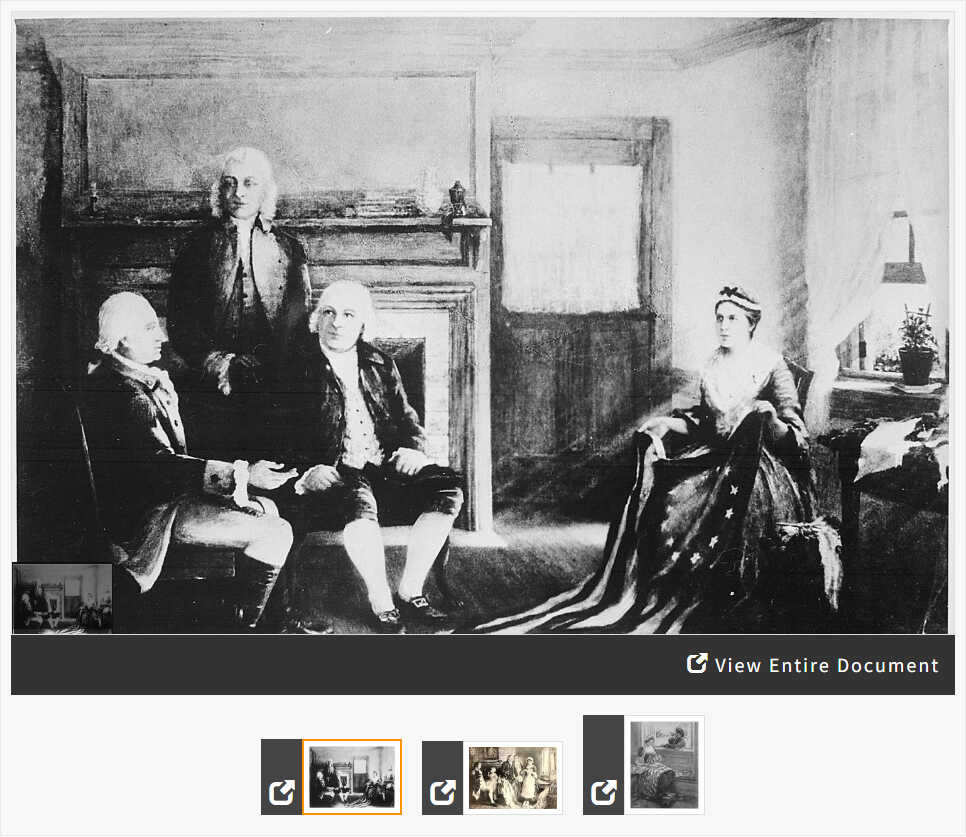In this activity, students will examine and analyze several artistic depictions of Betsy Ross, the upholsterer and flag maker that was credited by her relatives with creating the first official American flag.
Suggested Teaching Instructions
This activity can be used in a unit that explores American symbols and/or the American Revolution. For grades 4-8. Approximate time is 20-30 minutes.
Before beginning the activity, organize students into small groups. Ask students what the word myth means. Ask students to take 60 seconds to read the word silently and write down any thoughts or words that come to mind. Student groups should then take a few minutes to discuss their words and thoughts and write a shared definition.
Share a dictionary definition of the word myth. After discussing the definition, ask students:
- What myths do you know? Why do you think societies create myths?
- What myths about United States history do you know?
Discuss several of their myths (for example, Christopher Columbus being the first to know the world was round or George Washington chopping down the cherry tree). Explain to students they will be exploring another American mythic figure--Betsy Ross. Ask students what words come to mind when they think of Betsy Ross. Explain to students that they will review a variety of visuals created about Betsy Ross from the late 19th and early 20th centuries.
Divide the class into groups of three. Each group member should open the student activity and focus their analysis on a different depiction of Betsy Ross.
- How does the image depict Betsy Ross?
- What does it show her doing?
- What are some of the similarities? What are some of the differences?
After analyzing their individual images, students should discuss their image with the other group members, sharing what they think happened based on the perspective of their document. Then, as a group, they should compare the images. Students should note details including the scissors, star cutouts, and sewing equipment. While two of the images focus on the legendary meeting with George Washington and others, the third shows a more informal scene.
Share the following context with students about Betsy Ross:
In 1870, William J. Canby claimed in a paper read to the Historical Society of Pennsylvania, that his grandmother, Elizabeth Griscom Ross, "made the first flag with her own hands." In his telling, she met with George Washington, Robert Morris and George Ross (her deceased husband's uncle) and even suggested that the stars be change from six-pointed to five-pointed ones by showing the ease of creating one with by folding paper and cutting once with scissors.
Despite the fact that there was no documentary evidence to support his claim, Betsy Ross has been immortalized as an important figure in American History. The real Betsy Ross was an upholsterer and seamstress who supplied uniforms, tents and various flags to the patriot cause.
Her role in creating the American flag, however, seems much more likely to be myth than historical fact. Most evidence points to Francis Hopkinson (Founding Father, signer of the Declaration of Independence) as the American flag's designer.
Once they have discussed their images, each group should click "When You're Done" to answer the final questions.
- Why do you think the myth of Betsy Ross has endured?





